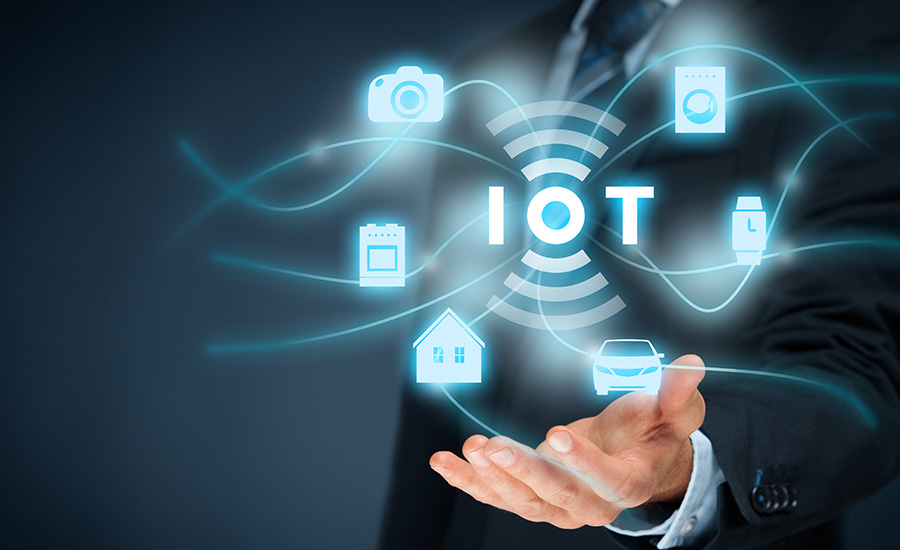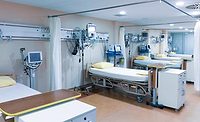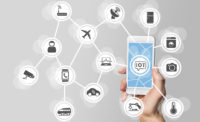The Internet of Things (IoT) is living up to the hype. According to research firm Statista, there are more than 20 billion end devices already networked through the Internet, with this number increasing more than three times by the year. In the process, end devices are becoming increasingly more intelligent and efficient, fueled by progress being made in artificial intelligence (AI), machine learning and even 5G, the new mobile phone technology, which creates the required bandwidths for data transfer in the IoT.
All of this adds up to huge potential for environments such as airports. The deployment of IoT cameras provides increased security and allows users to better understand the behavior of passengers. Based on video analyses in real time, operations in airports can be optimized and resources can be planned more efficiently.
The current focus of spending on IoT projects centers on the use of security cameras. However, a study carried out by Cisco determined that three out of every four projects would fail. The reason? Many investments fall short of the mark because traditional thinking in IoT is very one-dimensional: although cameras are being networked, their potential to optimize operations remains untapped. The key to tapping into this potential lies in finding the optimal synergy between end devices, platforms and software applications in the IoT, or “IoT Excellence.”
IoT enabled cameras help their users gain a greater understanding of how passengers – and employees - behave. This knowledge opens up new opportunities for optimizing processes and reducing downtime. Consider a few examples of how the IoT makes passenger transport more secure—particularly in airports—but also more efficient.
Smart Security Cameras
AI and higher computing power create new application possibilities for cameras in the IoT. Today, complex applications such as video analyses or AI-based facial recognition can run directly on the camera. A security camera in the airport not only provides video data, but it also compares this data—in real time—with images in databases. Patterns of movement by travelers entering and exiting airport facilities and passengers within the terminals can be detected and then interpreted in context.
Increased Security and Efficiency at Airports
Airports have to check in increasing numbers of passengers while also guaranteeing a high standard of security. IoT applications for security cameras can provide support by optimizing operations in these areas:
- Automatic facial recognition means people who are wanted by the police can be detected, increasing security at check-in areas.
- Security cameras can analyze and control visitor flow using smart displays. Passengers are kept informed—in real time—about waiting times and any operational irregularities.
- Camera systems in air traffic control towers analyze irregularities on the runways and inform the airport management team. New technologies guarantee optimal visibility—even at night or in poor weather conditions.
- By linking to other data sources such as weather data, traffic data and flight bookings, the systems can create intelligent forecasts about potential operational disruptions.
- Video analyses can be used for the early detection of suspicious behavior, whether by employees in sensitive areas for which they are not responsible, or passengers behaving in an unusual manner.
- Security personnel can use the camera system to follow suspicious people throughout the entire airport in real time.
- The theft of luggage and other items can be detected early and prevented.
- Unattended luggage can be discovered and investigated by security personnel more quickly.
Airports are complex environments, and not every concern relates to passenger flow. Beyond flight-related concerns, airports are also large retail centers, and IoT applications for cameras can be applied in these settings, as well. Analysis of shopper behaviors can help manage queues at shops and overall movement within the retail area, as well as analyze shopper demographics by age, gender or mood.
Before people even enter the terminal, cameras can also provide license plate recognition, collect data on accidents involving vehicles or individuals and alert security to abnormal or suspicious behavior on airport grounds.
Optimizing Waiting Times at Major Airports
One frequent bottleneck at airports are security checkpoints, which can easily cause long waiting times and operational irregularities. This can frustrate passengers and increase the workload of staff members. For this reason, many airports use camera systems to monitor the number of visitors. If a queue becomes too long, the system informs staff or provides this information via displays.
At one of Europe’s major airports, operations staff have implemented intelligent visitor management using an existing camera system. Video data is analyzed in real time, meaning waiting times can be predicted with 96 percent accuracy. The predicted waiting times are communicated via displays to control visitor flows. The result? An improved customer experience, increased security and more effective planning of personnel deployment.
The digital networking of camera systems offers the opportunity to improve how resources are used, to design processes more efficiently, to reduce costs and, ultimately, to raise the level of the experience for everyone involved.




